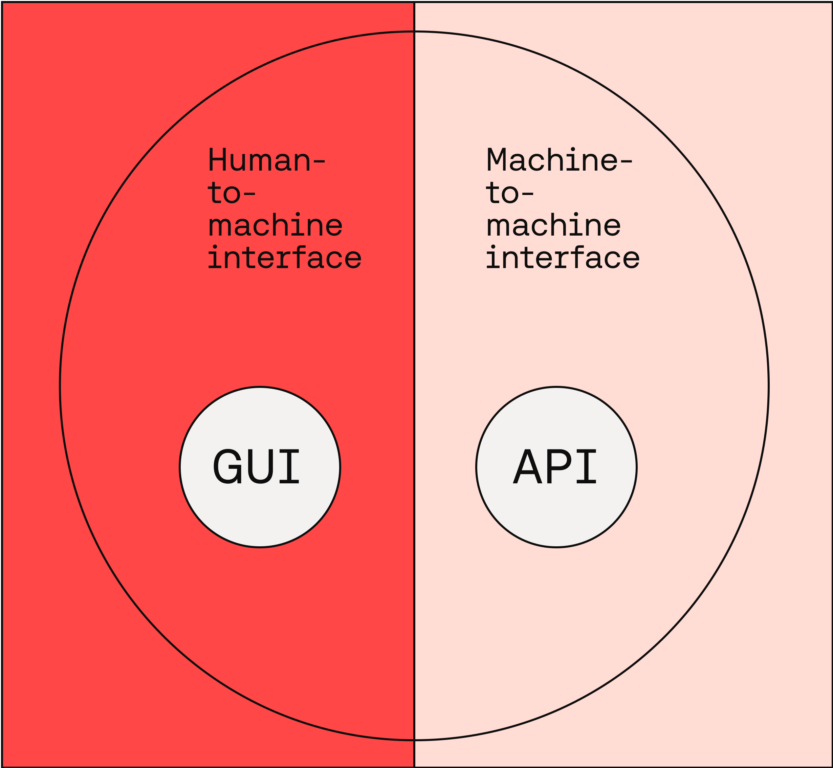Why interfaces are key to safe, compliant, and user-friendly SaMD
Defining and refining interfaces is essential when creating software medical devices.
The term "interface" is widely used in the software world, encompassing various concepts.
For example, an 'interface' can mean a Graphic User Interface (GUI) or an Application Programming Interface (API). The multiple meanings of the word ensure that it is not always clear what an interface truly is.
Still, understanding interfaces - and properly specifying and enhancing them - is critical to functionality and user experience, and key to ensuring SaMD that is not only functional but also safe, secure, effective, and compliant with important regulatory standards like IEC 62366-1, IEC 62304, and IEC 82304.
So let's outline a definition: an interface can be understood as any point of interaction between the user and the system, or between different components of a system. Here, a user is any person interacting with the device.

The importance of clear interface specification
Poorly defining interface specifications can lead to multiple issues in an increasingly interconnected and digitalised world.
The most obvious is use errors, which can potentially create safety risks. Other problems, like compatibility between a device and other systems, can lead to increased development costs or higher maintenance costs.
Let’s look at a few examples of problems created by poor interface specifications:
- A cluttered GUI design might cause a healthcare provider to misinterpret the result of a diagnosis device, potentially endangering patients
- Ambiguous API documentation could lead a software developer to wrongfully integrate a monitoring device within a bigger system, which could result in maintenance costs for the integrator and the potential wrongful display of monitoring values
- A lack of interface specification between medical devices and accessories, or another system, may require a Notified Body to ask for further information, potentially delaying device certification
Starting early
Effective interface design begins with the early and comprehensive definition of both user-facing and technical specifications.
User interfaces that involve people (patients, healthcare professionals, etc.), often called Human-Machine Interfaces, require understanding the target user groups and defining inputs, outputs, and workflows that align with their needs and expectations.
For example:
- An SpO2 monitor used in an ICU should provide easily accessible functions for adjusting the reading period and reacting promptly to changes in patient conditions
For machine-to-machine interfaces (interfaces with other software, systems, or even hardware), it is critical to specify the inputs and outputs clearly in terms of data, types, format, protocols, etc. It is essential to proactively explain how errors are handled, how incorrect inputs are managed, and how unexpected behaviours are communicated. And defining performance metrics for the described interfaces allows for smooth and safe use of the device.
For example:
- An API for an imaging device should specify the resolution, format, and transfer protocol for MRI scans to ensure the device can be used safely and reduce the risks related to sending incompatible images to the device
- A dosage calculator API should specify the maximum acceptable interval between glucose readings, particularly if these readings are critical for timely patient care. Failure to meet this performance requirement could compromise the safe use of the device
- A monitoring API should specify which error codes are replied to in case unauthenticated requests are made to the endpoints. This enables swift troubleshooting and facilitates integrations that avoid use errors
These specifications should be developed with an eye toward usability, safety, and security goals. They should ensure that the interfaces perform their intended functions and minimise risks to patients and operators.
Iterative refinement
While starting early lays a solid foundation for effective interface design and specification, interfaces should not be considered static objects throughout a medical device's development lifecycle. It is therefore important to get feedback and test interfaces during development.
Usability evaluation, in the guise of formative evaluation, can be a potent tool for following an interface's development journey while ensuring it meets the relevant requirements. However, this is not the only tool available, and integration testing can be particularly useful for internal interfaces.
Involving all types of users in this process, from end users to integrators, maximises the chance of developing robust, safe, secure, and compliant interfaces.
For APIs and other software interfaces, the iterative refinements should include:
- Security considerations to protect sensitive medical data. For instance, APIs handling patient data should comply with GDPR or HIPAA requirements
- Consideration of the interface's ongoing development are needed to ensure compatibility of future versions, and sustainable maintenance of the device
- The provision of comprehensive, clear documentation, to facilitate development teams' use of the device
Integral to your product
Interfaces are the lifeblood of software medical devices. Whether user-facing or technical, all interfaces matter and must be defined precisely and aligned with safety, security, usability, and compliance goals.
By starting early, involving relevant stakeholders, and iterating based on real-world use cases, development teams can create interfaces that meet regulatory requirements and enhance the device's overall quality and reliability. On top of this, clear documentation and specifications will make it significantly easier and more enjoyable for potential software integrators, and end-users, to make the best use of your software medical device.

Want Scarlet news in your inbox?
Sign up to receive updates from Scarlet, including our newsletter containing blog posts, sent straight to you by email.


